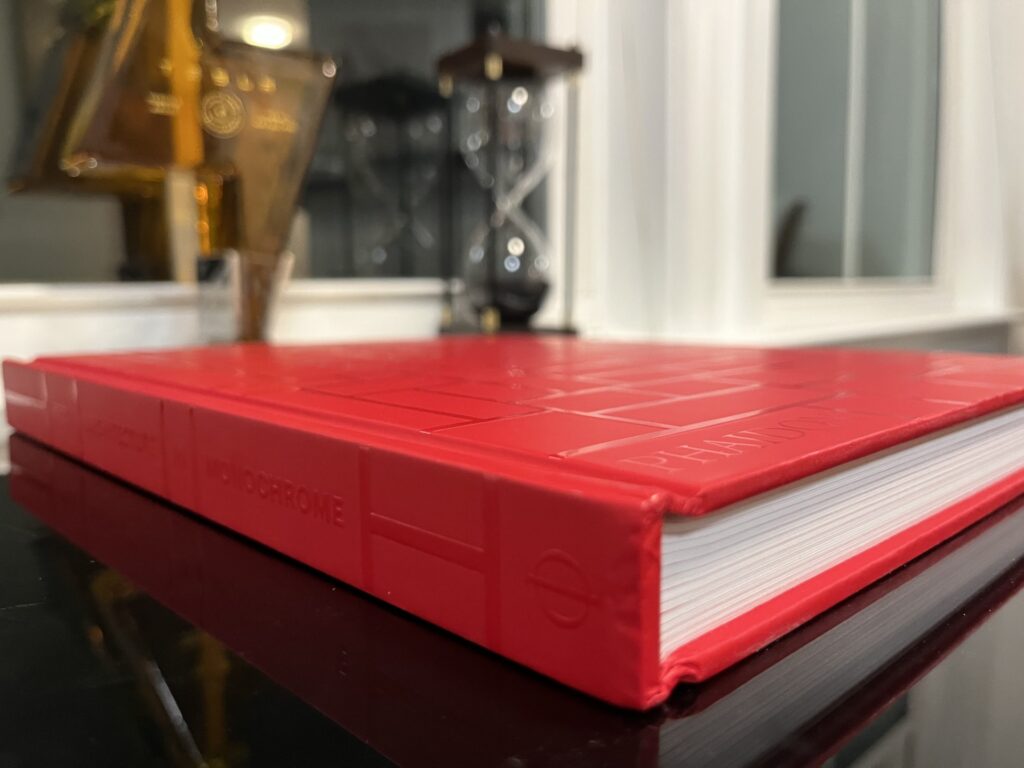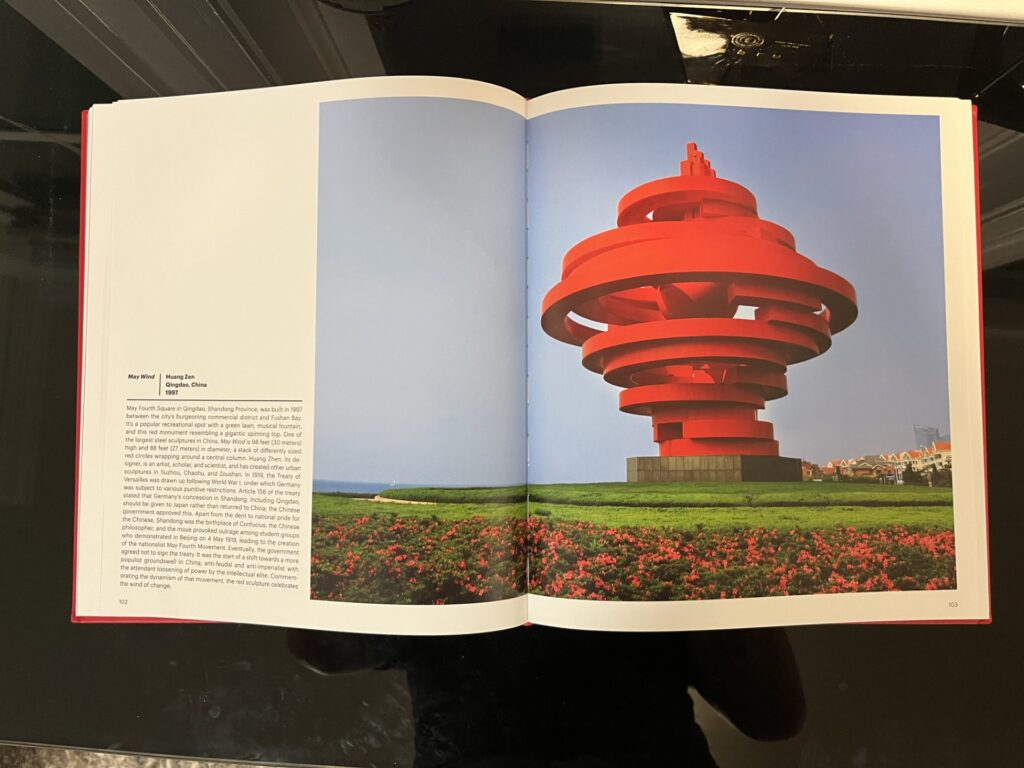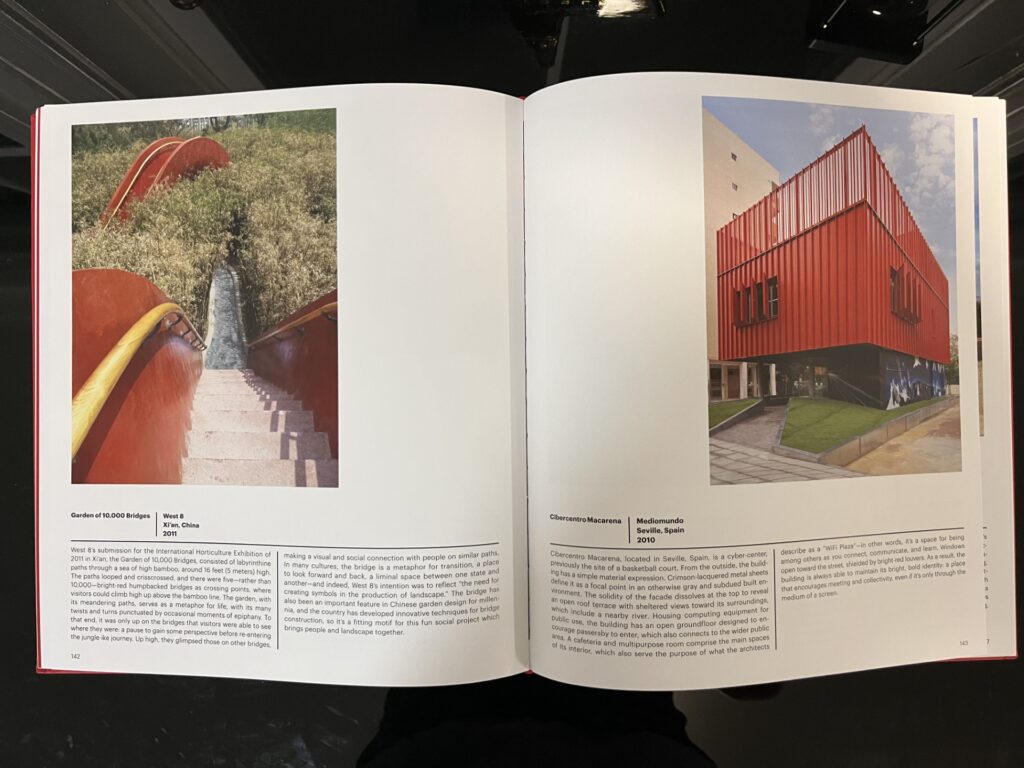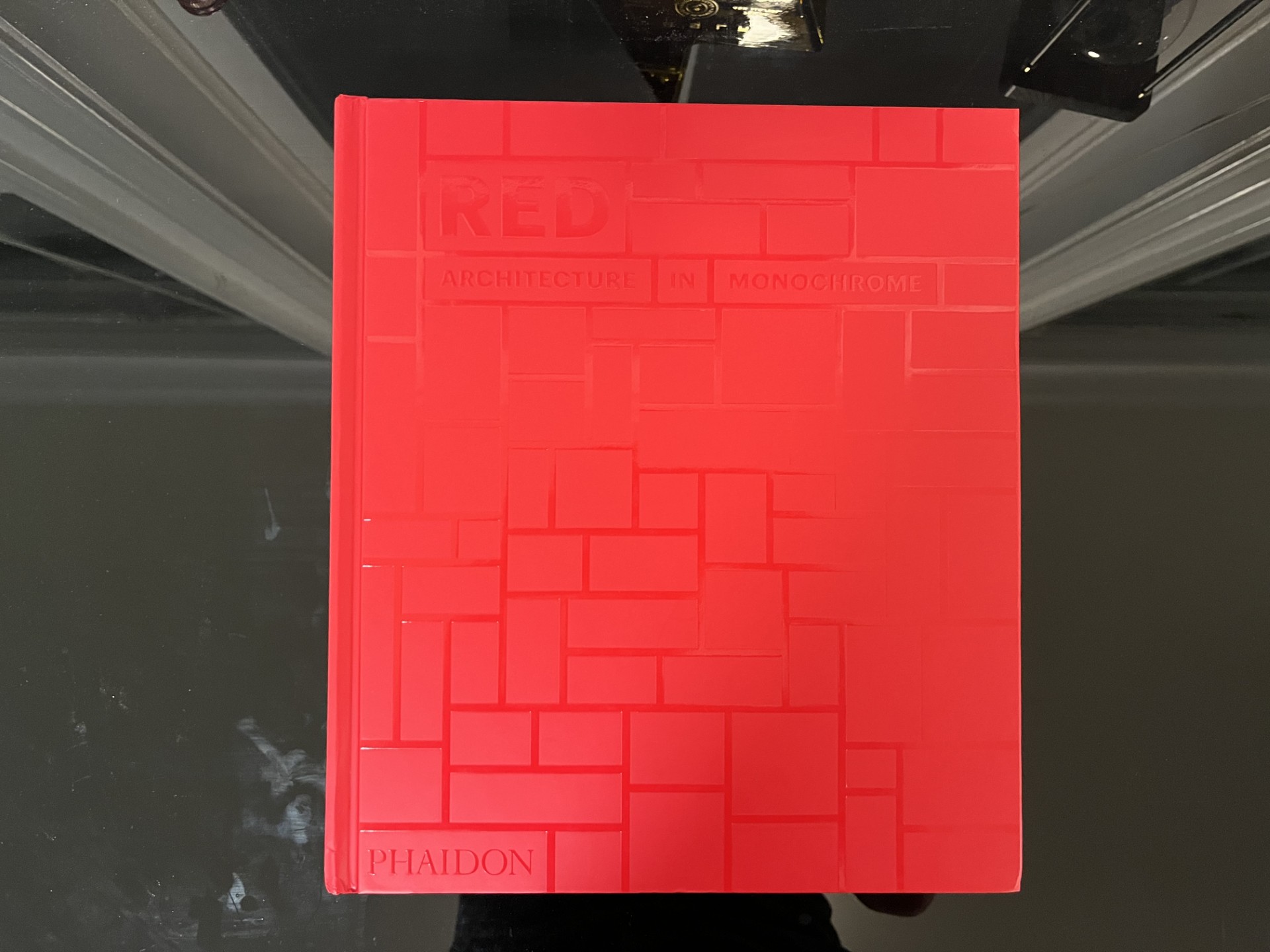“Red: Architecture in Monochrome” invites readers into a vibrant exploration of the color red’s significance in architecture. This coffee table book showcases how red influences mood, design, and perception in buildings around the world. Through stunning visuals and thoughtful commentary, it highlights the balance between traditional and modern uses of this bold color.
In her work, Stella Paul explores both the aesthetic and emotional aspects that red brings to architectural design. The book is not just for architects or design enthusiasts; it appeals to anyone curious about the power of color in their surroundings. Readers will find inspiration in the diverse ways red can enhance a space and evoke feelings.

Flipping through the pages of “Red: Architecture in Monochrome” offers a feast for the eyes and an insightful journey into the relationship between color and form. This book is essential for anyone looking to deepen their appreciation of architectural creativity while enjoying a striking visual experience.
The Allure of the Color Red
Red is a color that grabs attention. It is often linked to passion, energy, and warmth. This powerful hue can evoke strong emotions and has a rich history in art and architecture.
In architecture, red can be found in various styles. From ancient buildings to modern designs, red adds a striking element. Many architects choose this color to make a bold statement or highlight a key feature.
Reasons Why Red Stands Out:
- Symbol of Love: Red is the color of love and desire, making it popular in romantic settings.
- Visually Stimulating: Bright red catches the eye and can create a sense of urgency.
- Cultural Significance: In many cultures, red symbolizes good luck and prosperity.
In the book Red: Architecture in Monochrome, the significance of the color is explored. Each page showcases breathtaking structures that utilize this vibrant shade. The photography and text together highlight why red is a favorite among creators and designers.
Whether it’s a sleek urban building or a cozy home, red can transform spaces. It invites curiosity and encourages creativity, making it an essential color in architecture.
Origins of Red in Architecture

Red is a color that carries deep meaning in architecture. Its use has evolved over centuries, influenced by historical events and cultural beliefs. This section explores the historical significance and cultural symbolism of red in architectural design.
Historical Significance
Red has a long history in architecture, tracing back to ancient civilizations. One primary example is the use of red ochre in early cave paintings and structures, which represents one of the first uses of color in building.
In various cultures, red bricks were favored for their durability and striking appearance. Notably, the iconic red buildings of the Roman Empire showcased wealth and power. During the Renaissance, red was used to signify importance and pride in civic buildings, often symbolizing vitality and strength.
Cultural Symbolism
Beyond history, red holds significant cultural meaning across the globe. In many cultures, red symbolizes luck and prosperity. For instance, in Chinese culture, it is often used during festivals and celebrations, believed to ward off evil spirits.
In Western cultures, red is frequently associated with love and passion, making it a popular choice for buildings meant to evoke strong emotions. Additionally, many indigenous tribes utilize red in their architecture for its connections to the earth and their heritage. This multifaceted role of red establishes it as an important color in contemporary architecture.
Design Principles

The use of red in architecture brings unique design principles into play. This section explores how red influences modern design and the importance of contrasting elements in various structures.
Use of Red in Modern Design
Red is a powerful color that often symbolizes energy and passion. In contemporary architecture, it is used to draw attention and create a striking visual impact. Buildings featuring red facades can dominate their surroundings and provide a sense of warmth.
Designers often incorporate red through materials like bricks, steel, and glass. This choice enhances the overall aesthetic. For instance, a vibrant red entrance can welcome visitors, while red accents in interiors add personality to spaces.
An important aspect of using red is balancing it with other colors. Too much red can overwhelm, so it’s vital to use it strategically. This results in bold yet harmonious designs that are visually pleasing.
Contrasting Elements
Contrasting elements play a significant role in maximizing red’s impact. Pairing red with neutral colors like white or gray can create a stunning effect. This technique makes the red pop and draws the eye to specific features.
Textures also contribute to the contrast. For example, smooth red surfaces can be beautifully complemented by rough natural materials. This contrast adds depth and interest, making the design more dynamic.
Additionally, using light and shadow enhances these contrasts. Natural light can highlight red’s vibrancy, while shadows can create a sense of mystery. Overall, these elements work together to establish a cohesive aesthetic that showcases the brilliance of red in architecture.
Key Architectural Works
Red plays a powerful role in architecture, leaving a lasting impact through various iconic structures. This section highlights notable examples that showcase the diverse applications of red in design.
Iconic Red Buildings
Many famous buildings feature striking red elements that draw attention. For instance, the Red Square in Moscow is surrounded by historic structures such as Saint Basil’s Cathedral. Its vibrant colors symbolize Russia’s rich heritage.
Another example is the National Gallery of Canada in Ottawa, designed by architect Moshe Safdie. The interplay of red granite and glass creates a stunning visual effect, inviting visitors to explore its art collections.
In Japan, the Kinkaku-ji, or Golden Pavilion, with its red accents, is a beautiful example of traditional architecture harmonizing with nature. These buildings evoke strong emotions and stand out in their environments.
Case Studies
Several case studies illustrate the impact of red architecture in contemporary settings. The Casa Tolo in Brazil features bold red panels that contrast beautifully with the surrounding landscape. This design emphasizes the home’s unique identity while blending with nature.
In Toronto, the Toronto-Dominion Centre showcases red hues in its exterior, which enlivens the urban environment. This choice was made to create a welcoming space for workers and visitors.
Lastly, the Elbphilharmonie in Hamburg showcases a striking red brick base that connects it to the city’s industrial history. These examples highlight how red can be both eye-catching and meaningful in architectural design.
Materiality and Texture
Materiality and texture play a crucial role in shaping the identity of architectural designs. They influence not only the visual appeal but also how buildings interact with their environment. The feeling and look of a structure can evoke emotions and set the mood of a space.
Natural vs. Synthetic Materials
Natural materials like wood, stone, and clay bring an earthy quality to designs. They often age beautifully and connect buildings to their surroundings. For instance, brick structures can provide warmth and charm.
On the other hand, synthetic materials like glass and steel offer sleek and modern finishes. They can create striking contrasts against natural elements. Synthetic options can also allow for unique forms and shapes that enhance creativity in design. Both types contribute to the overall aesthetic of a building.
Surface Treatments
Surface treatments enhance the character of materials. Techniques such as staining, polishing, or texturing can drastically change a material’s appearance. For example, a rough or weathered finish can evoke a sense of history or rustic charm.
In contrast, a smooth, glossy surface might suggest modernity and sophistication. These treatments affect not just aesthetics but also durability and maintenance. The choice of treatment can influence how materials resist weathering and wear over time.
Red in Urban Spaces
The color red plays a significant role in shaping urban environments. It enhances public art and installations while influencing urban planning. This section explores how red transforms cityscapes and impacts both aesthetic values and community engagement.
Public Art and Installations
Red is a powerful color in public art. It draws attention and evokes emotion in urban settings. Artists often use red in sculptures, murals, and installations to create a focal point.
For example, striking red sculptures might contrast with the surrounding concrete, capturing the interest of passersby. Additionally, red can symbolize boldness and passion. This resonance can encourage community pride and engagement.
Local governments often support these installations as they draw tourists and create vibrant spaces. Public art events featuring red artworks empower communities to embrace creativity, enriching neighborhoods.
Influence on Urban Planning
Urban planners often strategically incorporate red into their designs. This approach can enhance wayfinding and improve public spaces. Red elements, such as benches or pathways, can guide people and create unity in the environment.
Moreover, red can stimulate feelings of warmth and safety in urban areas. Incorporating red into parks or communal areas is effective for encouraging outdoor activities.
Planners also consider the cultural significance of red. In some cultures, red symbolizes joy and celebration. By using red in urban design, cities acknowledge cultural diversity and promote inclusivity.
These thoughtful choices meet both functional and emotional needs, ensuring that urban spaces are welcoming and engaging.
Photographic Journey
In Red: Architecture in Monochrome, readers embark on a visual adventure. The book showcases stunning photography, bringing red architecture to life. Each image captures the beauty and strength of various structures.
Highlights of the Photographic Journey:
- Diverse Locations: From LA’s Petersen Automotive Museum to Moscow’s red-brick State Museum.
- Architectural Styles: Features everything from traditional buildings to modern designs.
- Vivid Imagery: Each photo emphasizes the color red, making architecture pop.
The book includes more than 150 captivating photos. They invite readers to explore the significance of red in architecture across different cultures.
By flipping through the pages, one can appreciate how red is not just a color, but a statement. This journey through these photographs helps readers understand the emotional impact of architecture.
Each photo tells its own story, guiding viewers through the architectural landscapes of the world. The combination of informative text and artistry makes this book a valuable addition to any coffee table. Whether enthusiasts or casual readers, everyone can find joy in this colorful exploration.
Interviews with Architects
In “Red: Architecture in Monochrome,” several architects share their thoughts on the use of red in their designs. They discuss how this vibrant color can evoke emotions and create a strong identity for buildings.
One architect noted that red stands out in a city landscape. It attracts attention and can symbolize warmth and energy. Another architect mentioned that red can create a sense of place, making a structure memorable.
They also highlighted the challenges of using red. Some discussed how it can be overwhelming if used excessively. Others shared tips on balancing red with other colors to maintain harmony.
Many architects see red as a way to challenge traditional design. They embrace its boldness and its ability to provoke thought, allowing them to express creativity and uniqueness.
The interviews in this book provide insights into the thought processes of these professionals. Readers gain a deeper appreciation for how color influences architecture and design. These perspectives on red showcase its potential as a powerful design element.
Interactive Elements
The inclusion of interactive elements in Red: Architecture in Monochrome enhances the reading experience. This book not only celebrates architecture but also engages readers through innovative technology. It features augmented reality and detailed mapping to bring the designs to life.
Augmented Reality Features
The book incorporates augmented reality (AR) to create an immersive experience. Readers can use a smartphone or tablet to scan specific pages. This action triggers 3D models of notable architectural designs.
AR allows users to explore the structure from different angles. They can zoom in on details or view the layout in real-time. This feature transforms traditional reading into an engaging exploration of architecture.
Red Architecture Maps
Included in the book are detailed maps highlighting various architectural landmarks. These maps guide readers through important sites from different eras. The maps are not just informative; they invite readers to discover these locations in the real world.
By following the maps, readers can explore the significance of each site. Each location is linked to architectural styles and periods represented in the book. This blend of reading and real-world exploration enhances the overall experience.
